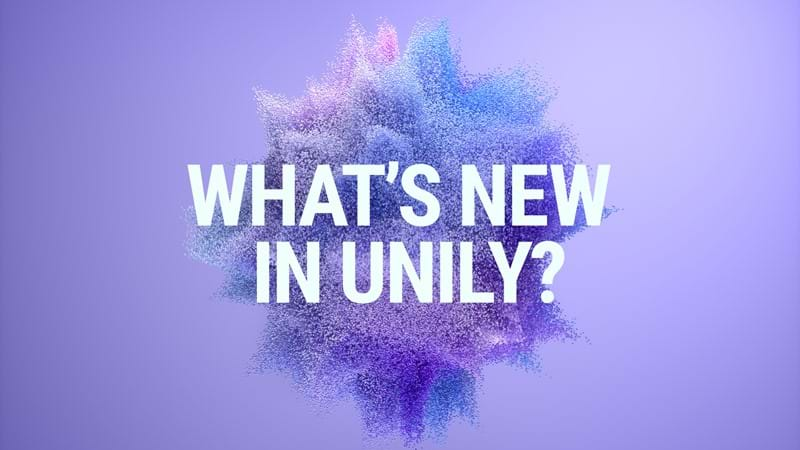Where does Workplace by Facebook fit in your intranet strategy?
With more than 30,000 organisations now using Facebook’s enterprise communication tool, Workplace by Facebook, we’re asking where it sits within your wider intranet strategy. Does it replace your intranet entirely or does it fulfil a specific purpose within your digital workplace?

As we commented on in our article on The digital workplace in 2018, this year it is more important than ever that the technology landscape is simplified as many new digital workplace technologies, including Workplace, continue to emerge. Because of this, there is now a greater need for clarity on what to use, or avoid, or come back to later. With this in mind, we’re looking at Workplace by Facebook in particular, helping to provide clear advice on how to use, make sense of, and distinguish between a myriad of tools that offer similar functionalities. Our job is simplify these choices.
When considering Workplace, the above statement is important to keep in mind as it’s just one of many disruptive technologies in the market. Five years ago, it was common for a company to choose Google or Microsoft as their enterprise technology platform and fit the business to meet the technology. In 2018, this has changed dramatically, with more and more organizations approaching projects with a new perspective. Now, it’s about Why the intranet and digital workplace exists and what it’s looking to achieve. By focusing on the Why, technology becomes more neutral in the argument, with organizations opting for a multi-vendor technology environment to address particular needs.
What is Workplace?
To recap, Workplace by Facebook is a communications platform run by Facebook, started in 2016. Its user experience is very similar to that of the consumer Facebook platform and is used to communicate via groups, to chat with colleagues and offers the social network’s features in a corporate environment. It’s not designed to replace a corporate intranet and has a focus on accessible communications and engagement tools.
What it’s not
Workplace is not an intranet platform and shouldn’t be seen as a replacement to one. For enterprise ready organizations who have a multitude of tools, documents, information, divisions, the technology is simply not designed to bring all of these elements together.
Key strengths
Workplace is taking off for a few different reasons:
- Very familiar user experience
- No training needed
- Targets younger workforce
- Live-streaming and video capabilities
- Employee engagement functionality such as polls
- No cost for non-profit or education sectors
Where does it fit?
There are a number of ways for it to fit in with your digital workplace depending on your requirements. From experience working with our own customers who are using Workplace alongside Unily, we’ve found these three scenarios are the most common:
#1. Workplace is standalone
In some cases, Workplace can be brought in to meet a very specific need. One example could be to help a Sales team to start collaborating and communicating on the go. With its familiar user experience, great accessibility on mobile and no training needed, the Sales team can get it and go. In this scenario, it’s not necessary for Workplace to be connected to your wider digital workplace as it’s being used in a silo, replacing a tool such as Office 365 Teams.
#2. Light-touch integration
Another scenario could be that Workplace is ‘lightly’ integrated to your intranet platform. For example, we have organizations that are using Unily Social to power comments and reactions on internal communications, communities and on the main company social feed, yet they link off to Workplace for specific project and team collaboration needs. This approach works as long as it’s very clear when and where to use each of the different tools and it’s governed well. The example below shows how Workplace could be linked-to from the central intranet, using Unily’s App and Tool menu.

#3. Deeper integration
A final scenario would be if you’re looking to replace all the social tools within the digital workplace with Workplace. In Unily, this could be replacing the Yammer or Unily Social feed with a Workplace feed. You could also replace any social feeds and channels, comment and liking functionality with Workplace. However, it would be important to consider the reasons for doing this, as by integrating heavily, some of the key selling points of Workplace may be compromised including the familiar user experience.
To decide which approach to take with Workplace, it’s important to consider the following things:
- Your employees – How do your employees like to work? What is their age? What is their technical maturity? If you have a young workforce with advanced technological maturity, Workplace can be a very powerful tool for instant engagement, as every millennial will be familiar with how the tool works.
- Your structure – Do you have a combination of head office workers and frontline workers? A key challenge for enterprises can be inspiring and engaging employees who work on the frontline. In these scenarios, Workplace can work well offering a technology that people are familiar with. However, Unily’s Engage solution offers a similar alternative, while allowing employees to be connected to key documents, productivity tools and other applications from across the digital workplace.
- Your content – Do you do a lot of live streaming and video? If you create a lot of live-streamed content and video content, then Workplace is great, offering a very user-friendly platform to share. To bring this back into your wider digital workplace, you could then take these pieces of content and bubble them up within your intranet using integration. This allows you to keep the engrained user experience of Facebook, while ensuring the content is fed back into your wider workplace.
- Your communication strategy – How do you communicate with employees? Like most enterprise organizations, if you have a global workforce, one message for all is not going to be sufficient. Having the ability to personalise, target and translate content for separate groups of employees is essential to ensure relevancy and engagement with information. In this scenario, Workplace is too simplistic an offering and doesn’t provide the granularity you will need. However, if you’re a smaller organization with more simplistic communication needs where blanket messaging is appropriate, Workplace can work very well.
To conclude, when analyzing how Workplace can fit into your wider intranet strategy, it’s not an either-or conversation. It’s about where Workplace fits amongst your other tools and how to make use of it without conflicting or confusing your existing technology. Not every application has to be integrated and you will always have a number of apps across your workplace. Integrating certain key things is sometimes more effective than trying to integrate an entire platform. Whatever you decide, make the choice clear to employees based on use cases, helping them to understand when and where to use each tool.
If you’d like any help or support understanding how Unily and Workplace can work together, don’t hesitate to get in touch with our team today.

















